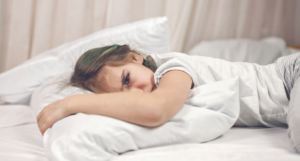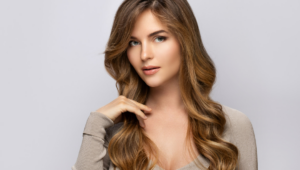Are you tired of waking up to frizzy, tangled hair every morning? In my experience, finding the right hairstyle to sleep in can make all the difference. When it comes to maintaining healthy hair, even your bedtime routine matters. That’s why I’ve put together this guide on the best hairstyles to keep your hair looking great while you catch some Z’s. From loose braids to silk scarves, the choices are endless, but not all hairstyles are created equal.
Healthy Hairstyles to Sleep In
Benefits for Hair Health
 Having a proper hairstyle for sleep is essential not just for style but also for the health of my hair. It can prevent issues like breakage, split ends, and tangles, keeping my hair strong and vibrant. By choosing the right hairstyle before bedtime, I ensure that my hair remains healthy and glossy, ready to style the next day without much effort.
Having a proper hairstyle for sleep is essential not just for style but also for the health of my hair. It can prevent issues like breakage, split ends, and tangles, keeping my hair strong and vibrant. By choosing the right hairstyle before bedtime, I ensure that my hair remains healthy and glossy, ready to style the next day without much effort.
Impact on Sleep Quality
The hairstyle I choose before bed can significantly impact my sleep quality. Sleeping with uncomfortable or tight hairstyles can lead to a restless night, affecting my overall sleep patterns. Opting for loose and comfortable styles, such as loose braids or a silk scarf, can help improve my sleep by reducing any pulling or tugging on my hair while I toss and turn during the night. A comfortable hairstyle not only promotes better sleep but also ensures I wake up feeling refreshed and ready to start the day.
Popular Healthy Hairstyles to Sleep In
Loose Braid
 When looking for a comfortable yet protective hairstyle to sleep in, the loose braid is a popular choice. A loose braid helps prevent tangles and minimizes friction, reducing the risk of breakage and split ends overnight. It keeps the hair contained and secure while allowing the scalp to breathe, promoting healthier hair growth. Opting for a loose braid before bedtime is a simple way to maintain your hair’s health and ensure you wake up with smooth, tangle-free locks.
When looking for a comfortable yet protective hairstyle to sleep in, the loose braid is a popular choice. A loose braid helps prevent tangles and minimizes friction, reducing the risk of breakage and split ends overnight. It keeps the hair contained and secure while allowing the scalp to breathe, promoting healthier hair growth. Opting for a loose braid before bedtime is a simple way to maintain your hair’s health and ensure you wake up with smooth, tangle-free locks.
Silk Wrapped Bun
For those seeking a luxurious and protective sleep hairstyle, the silk wrapped bun is an excellent option. Wrapping your hair in a silk scarf or using a silk pillowcase can help reduce friction and moisture loss while you sleep. The smooth texture of silk creates less damage to the hair cuticle, preserving its natural oils and preventing breakage.
Tips for Maintaining Hair While Sleeping
Choosing the Right Hair Ties
When it comes to maintaining hair health while sleeping, opting for the right hair ties is crucial. Elastic hair ties with metal fastenings can lead to breakage and damage hair shafts. Instead, I recommend using spiral hair ties or scrunchies made from silk or satin. These alternatives are gentle on the hair and reduce the risk of tangles and breakage, keeping your hair looking healthy and vibrant.
The Role of Pillowcase Materials
The type of material your pillowcase is made of plays a significant role in preserving your hair’s health while you sleep. Cotton pillowcases can cause friction, leading to hair breakage and frizz. To protect your hair, consider switching to silk or satin pillowcases. These materials are smooth and reduce friction, helping to maintain your hair’s moisture levels and prevent damage.
Additional Considerations
Managing Different Hair Types
 When it comes to selecting a healthy hairstyle for sleep, it’s crucial to consider the specific needs of different hair types. For those with straight hair, loose braids or a high bun can help prevent tangles and breakage while maintaining a sleek look. Individuals with curly hair should opt for the pineapple method to preserve curl definition and minimize frizz overnight.
When it comes to selecting a healthy hairstyle for sleep, it’s crucial to consider the specific needs of different hair types. For those with straight hair, loose braids or a high bun can help prevent tangles and breakage while maintaining a sleek look. Individuals with curly hair should opt for the pineapple method to preserve curl definition and minimize frizz overnight.
When to Avoid Certain Hairstyles
While certain hairstyles are beneficial for protecting your hair during sleep, there are also styles to avoid to prevent damage. Tight ponytails or buns can put excessive pressure on the hair follicles, leading to breakage and hair loss over time. Additionally, hairstyles with metal or plastic accessories can cause friction and damage to the hair cuticle.

